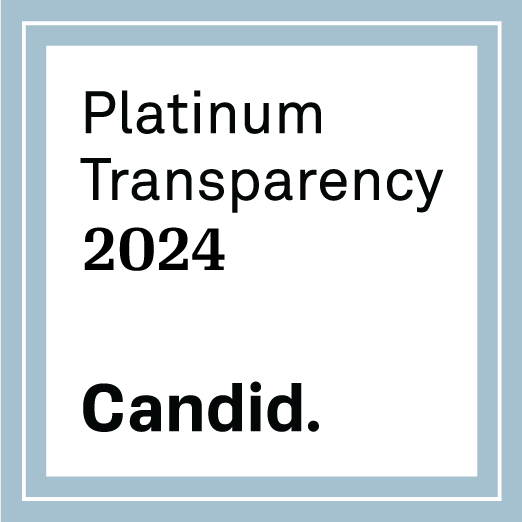|
Categories
Categories
All
Archive
Archives
July 2024
|
We’re giving you fair warning that the team at the Community Foundation is not going to stay quiet when it comes to emphasizing the importance of understanding at least the basics of the estate tax exemption sunset. Yes, we will be that broken record!
As a reminder, the estate tax exemption is the total amount a taxpayer can leave to family and other individuals during life and at death before the hefty federal gift and estate tax kicks in. This exemption is scheduled to drop big time after December 25, 2025. For 2024, the estate tax exemption is $13.61 million per individual, or $27.22 million per married couple. (Later this year, the IRS will issue inflation adjustments for 2025.) For 2026, without legislation to prevent it, the exemption is scheduled to fall back to 2017 levels. Adjusted for inflation, this would total roughly $7 million per person. Of course, no one will know for sure that the estate tax exemption is sunsetting until it actually sunsets. Certainly the upcoming election could impact the likelihood that Congress will intervene and extend the tax cuts from 2017 that increased the estate tax exemption in the first place. In any event, it is essential that you and your team understand what’s going on here so that you can be prepared to encourage your donors to discuss planning options with their advisors over the coming months while the issue is in limbo. You want your donors to know that you are on top of it! The net-net here is that a lot more people – including many of your donors – could be subject to estate tax in the not-too-distant future. This, in turn, means that your endowment fundraising strategies could get a shot in the arm as your donors work with their advisors to plan gifts and bequests to decrease their taxable estates through the charitable deduction. At the very least, the estate tax exemption is a fantastic conversation piece for your donor meetings, regardless of whether the sunset actually occurs at the end of next year. Potential tax increases tend to get donors’ attention, and you want to be right there in the mix to ensure that gifts to your endowment fund are on the radar. Please reach out to the Community Foundation team! We’d love to help you seize this opportunity. This article is provided for informational purposes only. It is not intended as legal, accounting, or financial planning advice. A recent study sheds light on how high net-worth people who’ve made their own money tend to approach philanthropy. As it turns out, self-made millionaires are more likely to give to charity than those who inherited their wealth – a whopping 93% reported doing so. People with legacy wealth are still likely to be philanthropic, but only 74% reported that they give to charity.
So what does this mean for your fundraising and stewardship practices, especially as you strive to build your endowment fund at the Community Foundation? As you’re building donor engagement strategies and expanding your roster of supporters, don’t just focus on “old money.” Consider three strategies to jumpstart your endowment-building efforts by engaging self-made donors: Track local companies. In every community across America, local entrepreneurs have started enterprises from scratch. In addition, more and more of your donors are investing in private markets instead of simply limiting their strategies to stocks listed on the exchanges. (Indeed, the number of publicly-traded companies has declined significantly since the mid-1990s.) The result of these two trends is that a large portion of many donors’ wealth is represented by closely-held stock in businesses they’ve started or in which they are investors. Make sure local companies and the people involved in them are on your prospect list. Talk the talk with entrepreneurs. Pay careful attention to the messages you use to engage entrepreneurs and people who own their own companies. These donors are likely to appreciate the investment characteristics of endowment gifts because they understand that an endowment’s long-term value is human-centered and not simply a financial strategy. Stay close to local companies and their owners as potential major donors, especially for long-term endowment giving. Understand gifts of closely-held stock. The team at the Community Foundation can help you tap into the increased popularity and tax benefits of donors giving closely-held business interests to support favorite charitable causes such as your organization. We can help you navigate a thoughtful stewardship process to encourage a closely-held business owner to consider a gift of ownership interests to your endowment fund at the Community Foundation, whether during the owner's lifetime in anticipation of a future (but yet-to-be-determined) exit, or upon death in the form of a bequest. We look forward to discussing the ways self-made millionaires can help your organization thrive for generations to come. Please reach out anytime to strategize with our team. We are here for you! This article is provided for informational purposes only. It is not intended as legal, accounting, or financial planning advice. By the time summer rolls around, reflecting on what happened last year may feel like cognitive whiplash. That’s not the case, though, with the statistics from the annual Giving USA report that are released every June for the prior year. The team at the Community Foundation reviews the findings closely so that we can identify trends and strategies that could help you and other nonprofits strengthen fundraising and stewardship practices and build financial resources to support the community for generations to come.
You’re likely aware that the recently-released Giving USA report for 2023 reveals that while charitable giving in the U.S. increased to $557.16 billion, the increase failed to keep pace with inflation. When adjusted for inflation, total giving declined by 2.1% year-over-year. While the news is disappointing in some ways, it actually presents a terrific opportunity to communicate a positive set of messages to your donors. Here’s an example of a four-point messaging platform that might be a fit for your outreach strategy:
As always, please reach out to the Community Foundation for ideas and strategies. We are here to help you build your reserves and endowment funds. It’s our honor to support your work to improve the quality of life for so many people in our region. This article is provided for informational purposes only. It is not intended as legal, accounting, or financial planning advice. The team at the Community Foundation is committed to keeping an eye out for trends and developments that impact charitable giving and your ability to raise funds for your organization’s mission.
Here are three developments you'll want to track:
Thank you, as always, for the opportunity to work together! It is our honor to be your partner in philanthropy and community impact. This article is provided for informational purposes only. It is not intended as legal, accounting, or financial planning advice. Your donors are likely very familiar with the term “endowment,” but they might not know how it works or how important it is to help sustain your mission for the long term. If you’ve established your organization’s endowment fund at the Community Foundation, we’re happy to help you communicate the benefits of endowment gifts to interested donors who may be new to providing this type of support.
For example, you can include language in your communications along these lines: “Endowment” is the word often used to refer to a designated pool of assets that are invested by and tracked separately such that a modest portion (usually based on a percentage) of the assets are distributed each year for charitable purposes, and the rest of the assets remain invested to grow in perpetuity. This growth, in turn, helps the endowment provide even more support each year to our organization. And this: Our organization has established its endowment fund at the Community Foundation, where the team is experienced at managing the accounting, investment, and distribution aspects of endowment funds. Working alongside the Community Foundation, our board and staff are committed to keeping a finger on the pulse of our community’s greatest needs and maintaining a deep understanding of how our organization can meet those needs now and well into the future when priorities emerge that simply could not have been predicted. Distributions from our endowment fund are reviewed and approved by an independent board of directors to ensure that they fulfill our organization’s mission-focused goals for establishing the endowment in the first place. And this: When you support our endowment fund through gifts of stock, bequests in your will, beneficiary designations on your retirement plans, or even gifts of real estate and other complex assets, you are helping pave the way for our organization’s long-term stability to continue to improve the quality of life in our region. What’s more, we can work with you and your advisors to structure endowment gifts that meet your own estate planning and tax objectives. As always, please reach out to the team at the Community Foundation for ideas about growing your endowment. We are here for our community, and we are here for you! This article is provided for informational purposes only. It is not intended as legal, accounting, or financial planning advice. Even with many of your donors traveling or taking time off, summer is not the time for stewardship and fundraising to move to the back burner. Especially because endowment gifts and complex charitable giving structures take time to establish, mid-year presents an excellent opportunity to double down on development efforts.
For example, always remind your donors to give appreciated stock instead of cash. Absolutely it feels like you are a broken record! You mention the benefits of giving appreciated stock all the time in your donor communications. But it really can’t be overstated. Donors are so tempted to reach for the checkbook for charitable giving, even when they are making a gift to your organization’s endowment fund at the Community Foundation. Emphasize to your donors that not only will transfers be eligible for a charitable deduction at fair market value (if the donor held the shares for more than one year), but also your organization won’t pay income tax on the capital gains. This means the donor will be making a much bigger gift than if the donor had sold the stock, paid the tax, and supported your organization out of the proceeds. The Community Foundation is always happy to help you process gifts of appreciated stock, especially when a donor wants to give a large block of a single stock to support your organization as well as others. And keep talking about QCDs! Donors who are 70 ½ or older absolutely must consider giving from an IRA. Certainly you mention this a lot in your discussions with donors, but sometimes donors are not ready to hear it, especially if they are on the cusp of reaching 70 ½ but aren’t there yet. They will listen differently when they’ve actually hit the age. As you know, a QCD allows a donor to direct $105,000 from an IRA to your organization, penalty-free. If a donor is subject to the rules for Required Minimum Distributions (RMDs), QCDs count toward those RMDs. That means the donor can avoid income tax on the funds distributed to charity. The Community Foundation is happy to help you work with donors and their advisors to determine whether a QCD is a good fit to help maximize charitable giving. This article is provided for informational purposes only. It is not intended as legal, accounting, or financial planning advice. You’re likely very consistent about reminding your donors about the benefits of giving long-term, publicly-traded securities to support your organization’s mission. Don’t ever stop! It’s so easy for a donor to forget about this and write a check, missing out on the opportunity to avoid capital gains tax.
Non-cash gifts also include assets beyond just publicly-traded stock. Remember that the community foundation can work with you to accept donors’ gifts to your endowment fund of many types of assets, including: Closely-Held Business Interests With proper planning, a donor can transfer shares of a closely-held business to your organization’s endowment fund at the community foundation. QCDs from IRAs A Qualified Charitable Distribution (“QCD”) is a very smart way for a donor who has reached the age of 70 ½ to give to your endowment fund. A donor can direct up to $105,000 from an IRA every year. Together, married couples can direct twice that amount. The donor avoids income tax on the funds distributed to your endowment fund. Real Estate Your endowment fund at the community foundation can receive a tax-deductible gift of a donor’s real estate, such as farmland or commercial property, avoiding capital gains tax and reducing the value of the donor’s taxable estate. Life Insurance For some donors, naming your organization’s endowment fund at the community foundation as the beneficiary of a life insurance policy is an effective way to leave a bequest. And, in the case of whole life policies, it may be possible and advantageous for the donor to not only name the endowment fund as beneficiary, but also transfer the policy itself and make annual, tax-deductible contributions to the community foundation to cover the premium. And that’s not all! Oil and gas interests, cryptocurrency, and collectibles are among the other assets that can make effective gifts to charity. Please reach out to the team at the Community Foundation to learn how we can help you accept non-cash, non-marketable gifts into your endowment fund. This article is provided for informational purposes only. It is not intended as legal, accounting, or financial planning advice. It’s common practice for fundraisers and other philanthropy professionals to use the term “planned giving,” but do your donors know what you mean? Certainly, some donors understand the term, especially those who’ve served on your board or who’ve worked with you to establish a bequest. But many donors – and especially prospective donors – could benefit from an explanation that avoids the confusion of industry jargon.
To that end, in your fundraising communications, you might consider providing background to help orient your donors to the purpose of planned giving before you dive into defining it or describing it. For example:
Clear, concise, and simple communication with donors will help your fundraising efforts. Indeed, a new study sheds light on the elements of communication that can help increase donor trust, including emphasizing good stewardship and solid decision-making practices. Consider adopting techniques to improve donors’ understanding of your message. For example:
By communicating clearly with your donors, omitting jargon, and sharing stories to demonstrate the value of a donor’s investment, you’ll go a long way toward improving your fundraising efforts to build long-term support for your organization and its mission, especially through planned gifts that demand a high degree of donor trust. This article is provided for informational purposes only. It is not intended as legal, accounting, or financial planning advice. As you and your team build momentum implementing your 2024 fundraising plan, keep in mind that many individual donors look at the same criteria used by foundations to determine whether to support a charitable organization. You may not even be aware that a prospective donor is conducting due diligence. Especially when a donor is considering making a large gift or setting up a bequest, gaining the donor’s confidence is key.
The team at the Community Foundation is always happy to serve as a sounding board as you strive to continuously improve your organization’s governance and operational documentation. Here are 3 items you might consider reviewing as you do a little spring cleaning. Governing Documents Make sure your articles of incorporation are up-to-date and reflective of your current mission. Donors who are considering a large gift will want to see that your legal documents are in ship shape, especially with respect to the language required to achieve Section 501(c)(3) status. If you’re in doubt, consult the IRS’s suggested language. You’ll also want to review your bylaws. Bylaws can become outdated, in some cases due to technology. For example, you’ll want your bylaws to include permission to use up-to-date mechanisms to gain board approval, such as through an online poll in lieu of an in-person meeting. Tax Returns You’re no doubt on top of the need to file the annual Form 990 tax return. Make it a point, though, to check for consistency between your Form 990 and the Form 1023 you filed (likely years ago) to secure the IRS Determination Letter granting charitable status. Make sure your organization’s charitable purpose is still stated correctly. Consistency across key documents is important to a lot of large donors. Indeed, many donors review the Form 990 carefully before they decide to make a gift. Make sure yours is accurate and compelling. Gift Acceptance Policy Make sure you’ve recently reviewed your policies for how your organization handles the acceptance of certain gifts, especially if they fall in the category of “Non-Standard Contributions” as defined by the IRS. Gifts of hard-to-value assets should not be undertaken lightly. We encourage you to reach out to the Community Foundation to assist in establishing a gift acceptance policy that will protect your organization and empower your fundraisers to engage in successful conversations with donors. To that end, the Community Foundation offers nonprofit organizations the opportunity to establish endowments and reserve funds to benefit from the Community Foundation’s governance and oversight, especially related to accepting complex gifts, as well as relying on the Community Foundation for all of the policies and administration associated with an endowment or reserve. We look forward to working with you! This article is provided for informational purposes only. It is not intended as legal, accounting, or financial planning advice. Despite what some people viewed as a softening in charitable giving over the last couple of years, philanthropy now appears to be on the upswing and is expected to rise by 4.2%. This is good context for your work with donors, especially as donors strive to engage their children and grandchildren in the family’s philanthropic endeavors, paying particular attention to the changing preferences and giving styles of younger generations.
At the Community Foundation, we are always here to serve as a sounding board for ways you can build long-lasting relationships with all of your donors. Our goal is to help your organization ensure that its endowment and reserve funds are strong and growing to secure your charity's mission in perpetuity. Please reach out anytime! This article is provided for informational purposes only. It is not intended as legal, accounting, or financial planning advice. If your organization has established an endowment or agency fund with the Community Foundation, your staff and board of directors are already experiencing the benefits of our relationship. We are here to help you grow critical financial resources to support your important mission well into the future.
Many nonprofit organizations who work with our team appreciate the opportunity to periodically review with their directors the benefits of working with the Community Foundation, whether at a board meeting or in a board communication. Here are points you can include in your next endowment update to your directors:
An endowment or agency fund at the Community Foundation is a powerful tool to help secure your organization’s financial future for generations to come. Thank you for the opportunity to serve as your behind-the-scenes back office. If your organization has not yet established a fund at the Community Foundation, please reach out. We’d love to explore how the Community Foundation’s tools and services can help you grow donors’ support for your mission. This article is provided for informational purposes only. It is not intended as legal, accounting, or financial planning advice. You’re no doubt familiar with donor-advised funds, especially if some of your donors use their donor-advised funds at the Community Foundation to support your organization. What you might not know is that the national average annual “pay-out rate” for all donor-advised funds is 18%, and most donor-advised funds make at least one grant per year. Furthermore, donor-advised funds help many individuals and families get involved in organized giving at a low barrier to entry. Indeed, nearly half of all donor-advised funds carry balances less than $50,000. To dive deeper into these and other insights, we suggest taking a look at the Donor Advised Fund Research Collaborative’s recently-released study.
At the Community Foundation, we are committed to growing philanthropy, connecting donors to the causes they care about, and leading on critical community issues. An important part of our mission is offering donors a wide range of ways to give to your organization and other charities that are most important to them. In many cases, establishing a donor-advised fund, field-of-interest fund, designated fund, or other type of fund at the Community Foundation helps a donor unlock assets for charitable purposes that would otherwise be difficult to tap. This is especially the case with highly-appreciated, noncash assets such as closely-held stock and real estate. We also make it easy for donors to structure long-term giving plans and bequests so that they can maximize their support for you and other favorite nonprofit organizations and involve their families, too. Please reach out anytime if you’d like to learn more about the Community Foundation’s mission to grow philanthropy for our entire region. This article is provided for informational purposes only. It is not intended as legal, accounting, or financial planning advice. Most of your donors have been made aware, often repeatedly, that giving highly-appreciated stock to favorite charities is a very tax-effective strategy. Indeed, gifts of shares held for more than a year are typically deductible by the donor at fair market value. When the charity sells the shares, the charity receives 100 cents on the dollar because nonprofit organizations don’t pay income tax. The net-net here is that the donor (1) benefits from a favorable income tax deduction, (2) avoids the capital gains tax that would have been triggered if the donor had sold the shares and used the cash proceeds to make the gift to charity, and (3) maximizes value for the charity.
So, with all of these benefits, why do so many donors forget about giving stock when they’re ready to make a gift to your organization or your organization’s endowment fund at the Community Foundation? Sometimes a donor is in a hurry, doesn’t think it through, and writes a check before realizing that it would have been better to give stock. Sometimes a donor assumes it will be too much of a hassle to pursue a stock gift. Most of the time, though, a donor simply forgets. This is why it is so important for your organization to mention the benefits of giving stock in nearly every fundraising communication. At any point in time, during any year and any month, regardless of whether the stock market as a whole is up or down, at least a few of your donors will be sitting on highly-appreciated stock. Those are the donors who need to hear the message. Already in 2024, for example, several stocks are hitting milestone one-year performance marks. Assure your donors that giving stock to your endowment fund is very easy. Seamless processing for stock gifts is one of the many benefits of establishing your organization’s endowment fund with the Community Foundation. As always, please reach out to the Community Foundation for ideas and strategies to build your endowment fund through donors’ gifts of stock. We’d love to help you seize the opportunity! This article is provided for informational purposes only. It is not intended as legal, accounting, or financial planning advice. Events are back! Yes, it’s true! If it feels like events are hot again, you are right! A recent OneCause study showed that 83% of charities are planning an in-person event for 2024, and one-third are planning a hybrid event. Check in with the team at the Community Foundation for ideas about how to include endowment fundraising in your event strategy.
Wealth transfer is happening. The wealth transfer hype continues, and the media seems to report new twists on a regular basis, including statistics about how Generation X’s and Millennials’ particular circumstances figure into the equation. The bottom line remains, though, that the next several years are critical to build and execute your endowment-building strategy. Please reach out to the Community Foundation for help with endowment gifts of complex assets, such as real estate, or tried-and-true gifts, such as highly-appreciated stock. Cause marketing considerations. Interested in aligning with a business or a brand? Cause marketing is not for every organization, but if you do decide to venture in, be sure to brush up on the rules and legal issues. Cause marketing can be a good way to amp up your organization’s brand, and, with savvy planning, you can leverage the increased visibility to grow your endowment. This article is provided for informational purposes only. It is not intended as legal, accounting, or financial planning advice. February – and early in the year in general – is a good time to make sure your plans are in place to grow your endowment. As you and your team work together to reach out to donors this month, consider the ways your endowment fundraising communications help you build the long-term relationships with donors that ultimately result in both current and planned gifts to your endowment fund at the Community Foundation.
Valentine’s Day itself is an opportunity to truly reflect on “long term” commitments. Endowments, of course, are intended to last in perpetuity... and the earliest valentines go back to the 1400s when an imprisoned medieval duke sent one to his wife. That brings new meaning to “standing the test of time!” Formalizing your organization’s endowment, especially through establishing an endowment fund at the Community Foundation, helps your organization attract donors’ investable gifts that can produce sustainable returns while the principal or endowed amount remains intact. This quarter, make it a priority to remind your donors about the various ways they can give to your endowment fund at the Community Foundation:
As always, the Community Foundation is here to assist with any type of gift to your endowment fund, whether the gift is simple or complex. Like relationships in your life, endowments need nurturing, and not just during Valentine’s Day month! The team at the Community Foundation welcomes the opportunity to help your endowment thrive in perpetuity. This article is provided for informational purposes only. It is not intended as legal, accounting, or financial planning advice. |
Visit Us |
Contact Us
Office Hours: Monday - Thursday, 10am - 4pm
Remote/Virtual Hours: Friday, 10am - 4pm Meetings by Appointment |
Accredited by the National Standards for U.S. Community Foundations®
© Community Foundation of Grand Forks, East Grand Forks & Region. All rights reserved.
Privacy Statement | EIN: 45-0448088

















